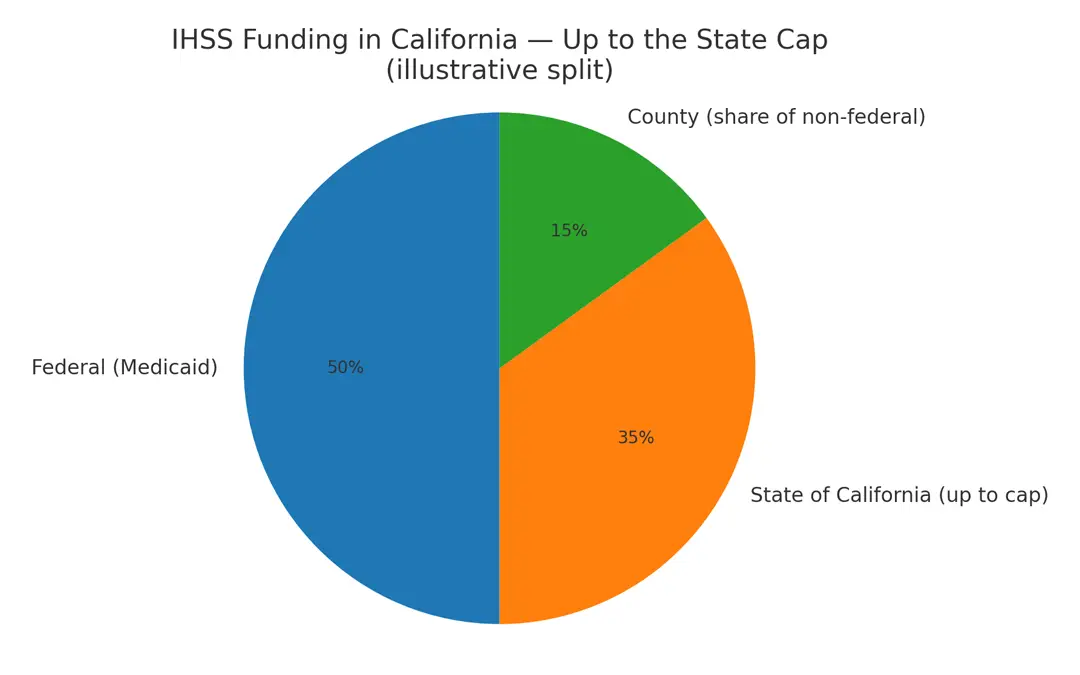From federal dollars to county budgets: how the cap traps caregivers
Step 1: Who pays IHSS wages?
- IHSS caregiver wages come from three pockets:
- Federal government (Medi-Cal/Medicaid)
- State of California
- Your county
They split the bill, but how much each pays depends on rules below.
Step 2: The California cap

- The state will only help pay up to a certain hourly wage.
- Right now, that cap = $1.50 above the state minimum wage.
- Example: if CA minimum wage is $16, the state will share costs up to $17.50/hour.
- If your county agrees to pay caregivers more than that cap, the county has to cover 100% of the extra.
- That’s why counties stall — they don’t want to be left holding the bag.
Step 3: What’s the “MOE”?
- MOE = Maintenance of Effort.
- Translation: each county has to put in a minimum chunk of money every year toward IHSS wages/benefits.
- It’s like a flat entry fee: counties can’t walk away from funding.
- The state calculates the MOE, updates it yearly, and counties must at least pay that much.
Step 4: How raises actually happen

- Union bargains with the county for higher wages.
- If the new wage is still under the state cap, then feds + state help cover most of it.
- If it’s above the cap, the county alone pays the difference.
- That’s why wealthier counties (SF, Santa Clara, LA) often pay higher wages — they can afford to go above the cap. Poorer counties don’t.
Step 5: Why it matters
- State minimum wage keeps climbing → cap moves up too.
- But unless the cap rule changes, counties with tight budgets keep us stuck near minimum wage.
- That’s why caregivers push: raise the cap, or fully fund above it — otherwise IHSS stays poverty pay.

0 Comments